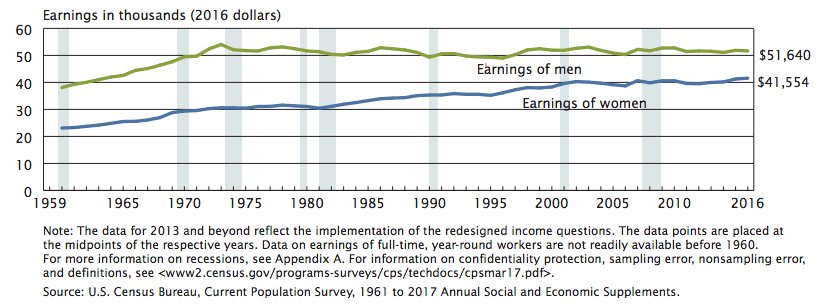Democrats should quickly grab President Donald Trump’s amnesty-and-immigration offer before the next election, says a group of progressives cited in a New York Times op-ed article.
Columnist Thomas Edsall quoted emails from his various progressive friends, most of which tacitly recognize that Trump has public opinion on his side in the overall immigration debate. He wrote:
I found an unexpectedly high percentage of the experts I contacted — most of whom are sympathetic to the plight of immigrants — in general agreement that Democrats would be wise to come to some kind of an agreement with Trump.
Edsall is a level-headed reporter, and he cites the pro-acceptance emails without personally recommending whether the Democrats grab Trump’s offer to amnesty at least 1.8 million illegals. But that ‘Grab it’ message comes through loud and clear in the article, which was posted the day Trump suggested he could turn the immigration dispute into a winning issue in November.
Edsall wrote:
Steven Gold, a sociologist at Michigan State University, emailed me:
Many Democrats fear that extensive investments and political posturing made on behalf of immigrants will be regarded as of little value to a large swath of independent voters whose support Democrats need to increase their representation in Congress.
… [Nolan McCarty, a political scientist at Princeton] McCarty explained further:
Blocking it would allow the Trump Administration to suggest that the Democrats were willing to trade Dreamers for “lottery” and “chain” migration, as well as position them as soft on border security.
… Robert L. Borosage, president of the left-liberal Institute for America’s Future, argued that Democrats should make every effort to get the immigration issue off center stage. “In my view,” Borosage said in an email, “Trump wins as long as we’re arguing about this. So it would be good to get this done soon.”
McCarty recommended accepting the deal for temporary advantage, and then immediately violating the deal when they recover the White House. Democrats could chop enforcement funding and raise the annual inflow when they get back in power, McCarty said.
Edsall also noted that the amnesty proposal in Trump’s four-part amnesty-and-immigration framework offer may be very unpopular with the GOP base that provided Trump’s presidential victory in 2016.
Many pro-American reformers say the deal allows an immediate amnesty before the wall in completed in several years, before there are any actual reductions in chain migration after 2030, and before judges try to strike down the pro-American portions of the legislation. The reformers worry the bill grants Democrats a huge amnesty victory without any wage benefits for Americans, and that Trump’s voters will feel betrayed and will not vote in 2018.
Many Democrats — including activists — want the amnesty but are appalled by other parts of the proposal. They may pressure Democratic leaders to reject the deal in the hope of winning more seats in the Senate and House in November.
The article is here.
The readers’ comments are interesting because they show strong support by many of the NYT’s white-collars readers for Trump’s immigration reforms.
Aside from the amnesty, polls show that Trump’s pro-American immigration plans are very popular among the public, including among blue-collar African-Americans who are a core element of the Democrats’ current electoral base.
In contrast, business groups, Democrats, and the establishment media tout the misleading, industry-funded “Nation of Immigrants” polls which pressure Americans to say they welcome migrants, including the roughly 3 million ‘dreamer’ illegals.
The alternative “priority or fairness” polls — plus the 2016 election — show that voters in the polling booth put a much higher priority on helping their families, neighbors, and fellow nationals get decent jobs in a high-tech, high-immigration, low-wage economy.
But the details of Trump’s four-part amnesty are likely not popular with voters or Trump’s base. Edsall quotes a pollster at the pro-amnesty Cato Insitute, who said “This framework may anger a critical component of Trump’s base … This in turn could impact turnout in the 2018 midterms.”
Trump described his four-part offer in the 2018 State of the Union speech, where he said:
The first pillar of our framework generously offers a path to citizenship for 1.8 million illegal immigrants who were brought here by their parents at a young age — that covers almost three times more people than the previous administration covered. Under our plan, those who meet education and work requirements, and show good moral character, will be able to become full citizens of the United States over a 12-year period.
The second pillar fully secures the border. That means building a great wall on the Southern border, and it means hiring more heroes like CJ to keep our communities safe. Crucially, our plan closes the terrible loopholes exploited by criminals and terrorists to enter our country — and it finally ends the horrible and dangerous practice of “catch and release.”
The third pillar ends the visa lottery — a program that randomly hands out green cards without any regard for skill, merit, or the safety of American people. It is time to begin moving towards a merit-based immigration system — one that admits people who are skilled, who want to work, who will contribute to our society, and who will love and respect our country.
The fourth and final pillar protects the nuclear family by ending chain migration. Under the current broken system, a single immigrant can bring in virtually unlimited numbers of distant relatives. Under our plan, we focus on the immediate family by limiting sponsorships to spouses and minor children. This vital reform is necessary, not just for our economy, but for our security, and for the future of America.
However, Trump did not mention that his plan would provide green cards to all 4 million people on the list of pending chain migrants. Americans would feel a workplace gain in wages in 10 to 20 years after all 4 million are admitted. That long period would allow plenty of time for business groups and Democrats to raise the immigration inflow.
The amnesty would be extended to many more people than the u800,000 who have formally identified themselves for the DACA amnesty. The extension is a huge invite for fraud because it offers the hugely valuable prize of citizenship to anyone who can use false documents to convince federal bureaucrats that they meet the amnesty’s tests.
Also, the draft amnesty bill does not have an end date, or a cap, meaning that business and Democratic groups might gradually bump the amnesty for 1.8 million up to 3 million or 4 million.
Four million Americans turn 18 each year and begin looking for good jobs in the free market.
But the federal government inflates the supply of new labor by annually accepting roughly 1.1 million new legal immigrants (including roughly 750,000 working-age migrants), by providing work-permits to roughly 3 million resident foreigners, and by doing little to block the employment of roughly 8 million illegal immigrants.
The Washington-imposed economic policy of economic growth via mass-immigration floods the market with foreign labor, spikes profits and Wall Street values by cutting salaries for manual and skilled labor offered by blue-collar and white-collar employees. It also drives up real estate prices, widens wealth-gaps, reduces high-tech investment, increases state and local tax burdens, hurts kids’ schools and college education, pushes Americans away from high-tech careers, and sidelines at least 5 million marginalized Americans and their families, including many who are now struggling with opioid addictions.
The cheap-labor policy has also reduced investment and job creation in many interior states because the coastal cities have a surplus of imported labor. For example, almost 27 percent of zip codes in Missouri had fewer jobs or businesses in 2015 than in 2000, according to a new report by the Economic Innovation Group. In Kansas, almost 29 percent of zip codes had fewer jobs and businesses in 2015 compared to 2000, which was a two-decade period of massive cheap-labor immigration.
Because of the successful cheap-labor strategy, wages for men have remained flat since 1973, and a large percentage of the nation’s annual income has shifted from employees to investors.


COMMENTS
Please let us know if you're having issues with commenting.